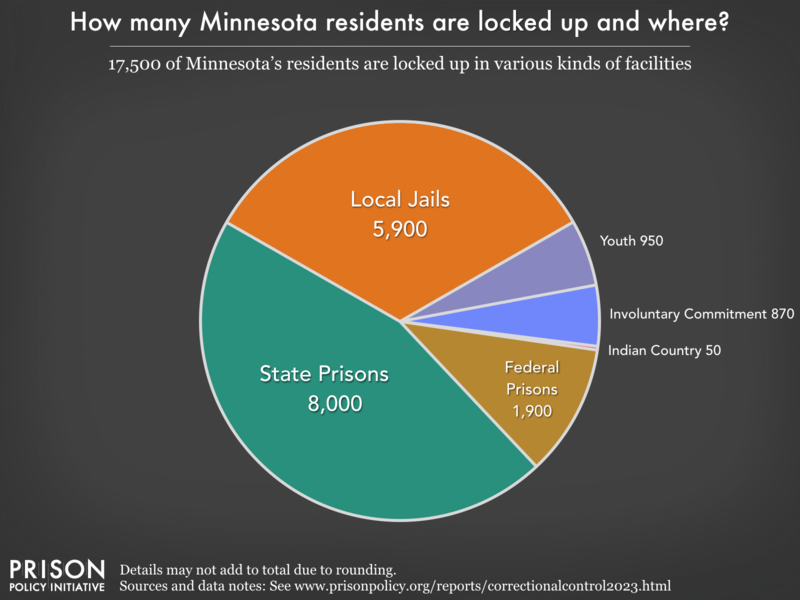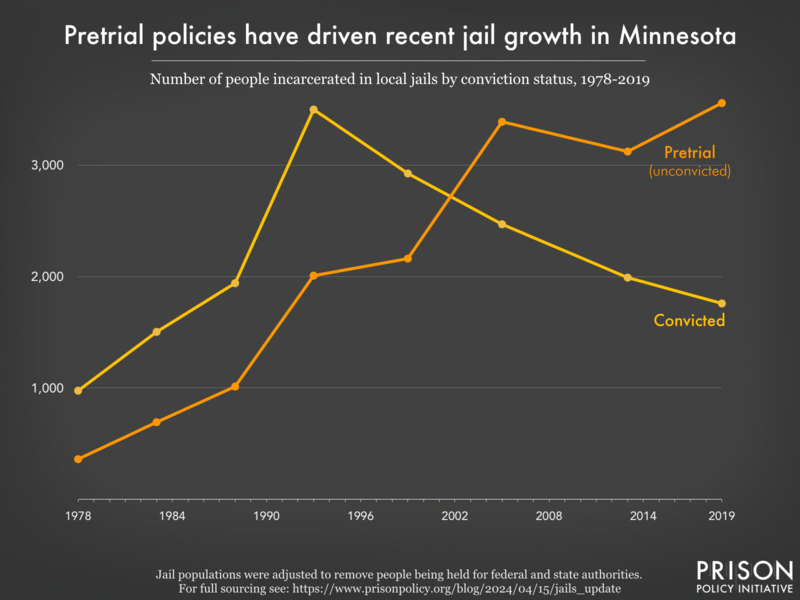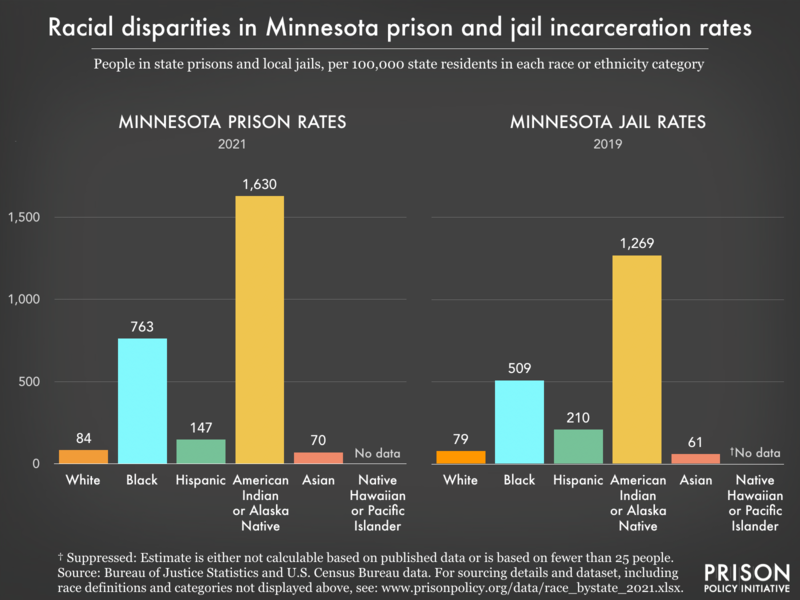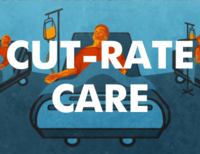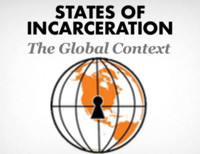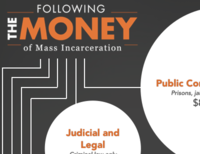Minnesota profile
Minnesota has an incarceration rate of 323 per 100,000 people (including prisons, jails, immigration detention, and juvenile justice facilities), meaning that it locks up a higher percentage of its people than almost any democratic country on earth. Read on to learn more about who is incarcerated in Minnesota and why.
17,500 people from Minnesota are behind bars
Additionally, the number of people impacted by county and city jails in Minnesota is much larger than the graph above would suggest, because people cycle through local jails relatively quickly. Each year, at least 69,000 different people are booked into local jails in Minnesota.
Rates of imprisonment have grown dramatically in the last 40 years
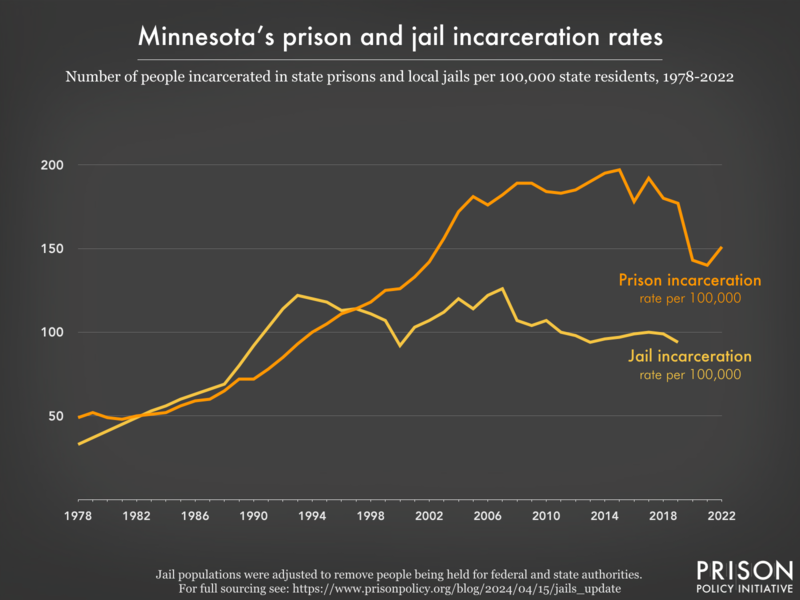
- total numbers rather than rates.
- Women’s prisons: Incarceration Rates | Total Population
- Men’s prisons: Incarceration Rates | Total Population
Today, Minnesota’s incarceration rates stand out internationally

People of color are overrepresented in prisons and jails
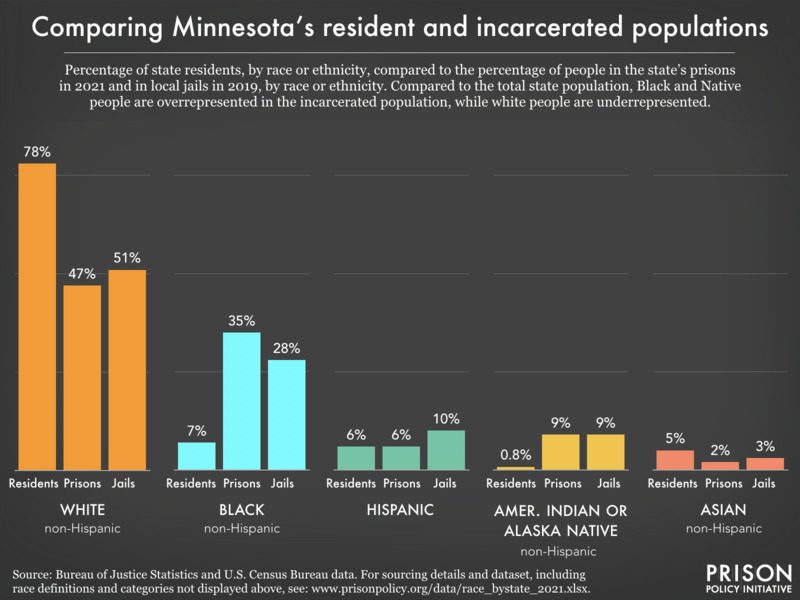
Minnesota's criminal justice system is more than just its prisons and jails
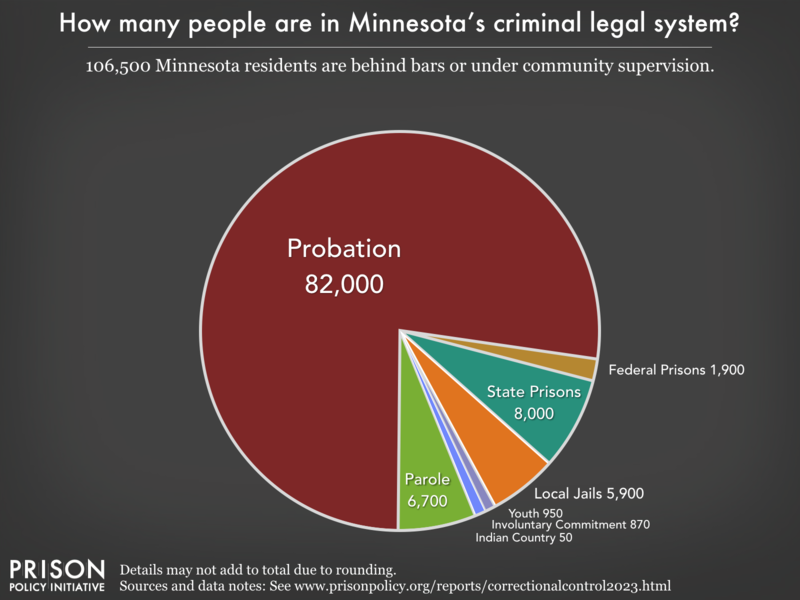
Reports and briefings about Minnesota's criminal legal system:
Filter to show
- Minnesota makes medications for opioid use disorder available in some of its prisons. Why is getting treatment for substance use disorders so difficult across the US carceral system?
- Despite reducing its prison population at the beginning of the pandemic, Minnesota's prison population increased 9% between 2021 and 2023.
- People on probation in Minnesota are saddled with onerous rules and conditions they must follow every day or risk incarceration.
- Prisons in Minnesota have tablets, but they may be being used to restrict incarcerated people’s access to books and sap them of the little money they have.
- With an incarceration rate of 323 per 100,000 residents, Minnesota locks up a higher percentage of its people than almost any democratic country on earth.
- On May 17, 2024, Minnesota Governor Tim Walz signed a bill ending prison gerrymandering in the state.
- 67% of people in Minnesota jails have not been convicted of a crime, meaning they're legally innocent. There are simple steps the state can take to reduce this number. Why isn't it?
- New data shows that Minnesota county jails charge steep prices for communication services while banning in-person visits
- Minnesota releases roughly 158,347 men and 50,013 women from its prisons and jails each year. What is it doing to support them upon reentry?
- Black people in Minnesota are incarcerated at a rate 9.1 times higher than white people.
- Minnesota's choice to criminalize "failure to appear" may be hurting public safety
- The cost of incarcerating older people is incredibly high, and their risk of reincarceration is incredibly low, yet 10% of people in Minnesota prisons are over the age of 55. Why is the state keeping so many older people locked up?
- Minnesota makes it difficult or even risky for incarcerated journalists to tell their stories.
- Minnesota is one of 20 states that locks up some people convicted of sex offenses in shadowy "civil commitment" facilities, long after their sentences are over — and often indefinitely
- In Minnesota, 17,500 people are incarcerated and another 88,700 are on probation or parole.
- Minnesota charges up to 40¢ for an e-message to or from prison, among the highest rates in the nation.
- Jails in Minnesota charge up to $3.15 for a 15-minute phone call, reaping profits for companies, while prisons charge 75¢ for a 15-minute call.
- Some Minnesota prisons are replacing incarcerated people's personal mail with scans, stifling family contact
- Bail companies in Minnesota have a track record of avoiding accountability, our report All Profit, No Risk and review of state-by-state evidence show
- Minnesota suspended medical copays in prisons at the beginning of the pandemic — why is it bringing copays back now?
- People in Minnesota prisons must pay for hygiene items and other basics — and those without cash have to meet strict “indigence” criteria to get financial assistance.
- Minnesota prisons charge families up to a 20% fee to transfer money to an incarcerated loved one.
- We gave Minnesota a failing grade in September 2021 for its response to the coronavirus in prisons.
- How many COVID-19 cases in Minnesota communities can be linked to outbreaks in correctional facilities? (data from our report Mass Incarceration, COVID-19, and Community Spread)
- Minnesota hinders jury diversity by excluding people with felony records until they complete probation and parole sentences
- We graded the parole release systems of all 50 states - Minnesota gets an F-
- Minnesota incarcerates women at a rate of 69 per 100,000 residents — higher than almost any democratic country on earth.
- People in Minnesota prisons earn as little as 25¢ an hour for their work.
- Bill ending prison gerrymandering clears Minn. Senate
- Ending Prison Gerrymandering in Minnesota [PDF](2013) (Summary of the problem with an emphasis on a model bill solution for the state)
- Prison-based Gerrymandering in Minnesota [PDF] (2012) (Earlier summary of the problem and potential solutions)
Other resources
- Research on Minnesota in our Research Library
- Ending prison gerrymandering in Minnesota campaign and resource page
Events
- April 15-17, 2025:
Sarah Staudt, our Director of Policy and Advocacy, will be attending the MacArthur Safety and Justice Challenge Network Meeting from April 15-17 in Chicago. Drop her a line if you’d like to meet up!
Not near you?
Invite us to your city, college or organization.
